December 2, 2025
Exploring the Spectrum: Understanding Atypical Autism and Behavioral Interventions
Atypical autism represents a variation within the broader autism spectrum disorder (ASD), distinguished by unique developmental patterns or later onset of symptoms that do not fully meet the classical criteria for autism. Understanding these nuances is crucial for early identification, diagnosis, and tailored therapeutic approaches. This article delves into what atypical autism entails, its place within the spectrum, and the vital role of behavioral analysis therapies like Applied Behavior Analysis (ABA) in supporting those affected.
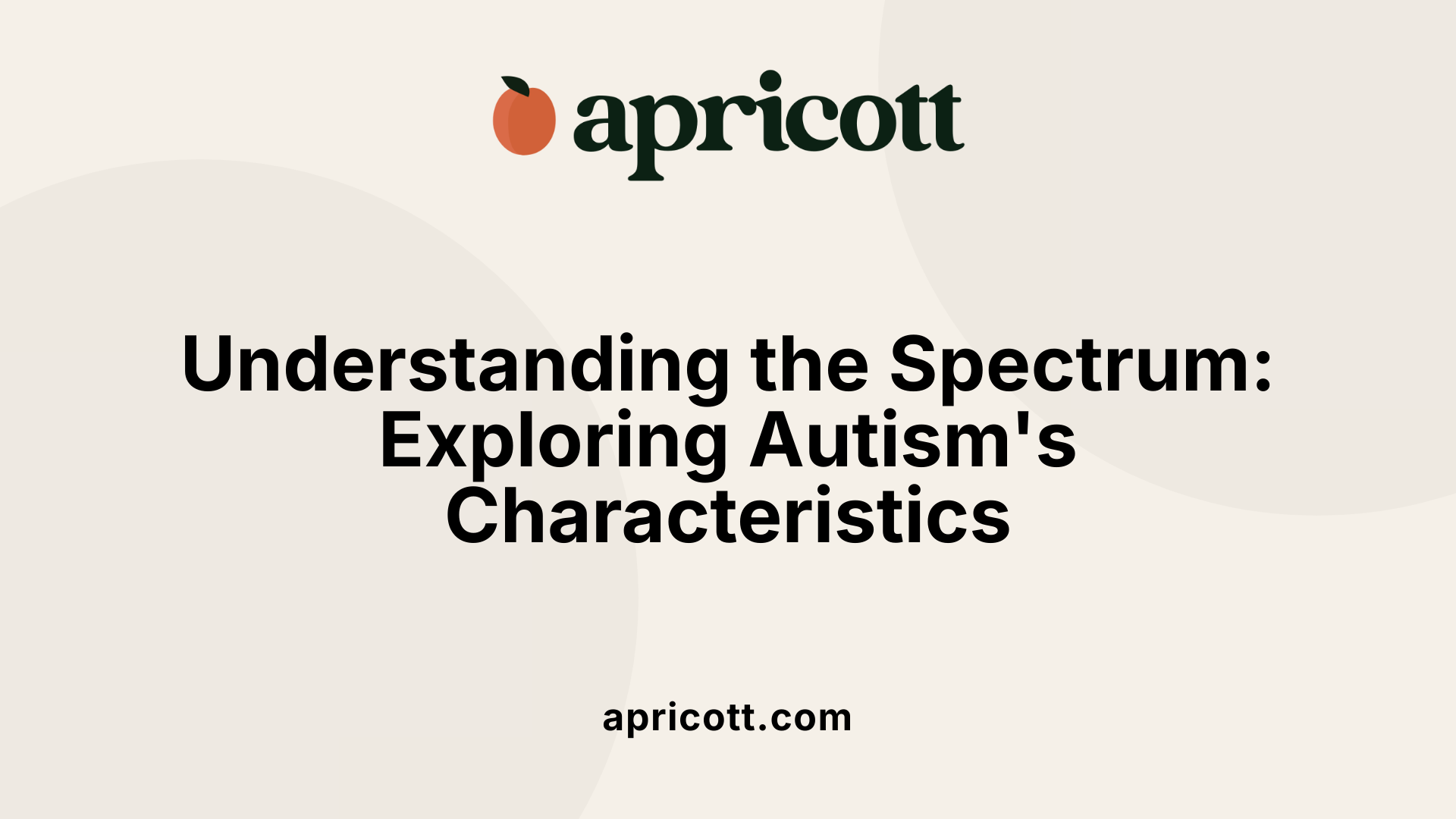
Autism spectrum disorders (ASD) are a heterogeneous group of neurodevelopmental conditions. They are mainly marked by challenges in social interaction and communication. Individuals with ASD also exhibit unique or atypical patterns of behavior, interests, and activities.
ASD presents with a wide range of abilities and needs. Some autistic individuals may need lifelong support and care, while others achieve independent living and function effectively in many aspects of daily life. This diversity reflects the "spectrum" nature of the condition.
Social communication difficulties often involve problems with back-and-forth conversation, understanding social cues, and forming relationships. Behavioral features frequently include repetitive movements or activities and restricted interests. These core traits together shape how each person's autism manifests.
Understanding this variability helps tailor interventions and supports to meet personal needs effectively, emphasizing the importance of recognizing both common and individual features of ASD.

Atypical autism is a form of autism spectrum disorder (ASD) in which individuals exhibit some, but not all, of the usual signs associated with classic autism. Unlike typical autism, where symptoms such as social communication challenges and repetitive behaviors often emerge early and clearly, atypical autism may present a milder set of symptoms or show an unusual combination of traits that makes it more difficult to diagnose. This variation can also mean that symptoms surface later than expected, potentially delaying recognition and diagnosis.
Because atypical autism doesn't fully align with the classic symptoms, specialized and comprehensive assessment is crucial. Diagnosing ASD typically involves an interdisciplinary team using standardized tools like the Autism Diagnostic Observation Schedule (ADOS), but atypical cases require careful evaluation of partial or subtle signs across social communication, behavior, and language skills.
Developmentally, individuals with atypical autism may experience changes in their abilities and needs over time. Some may function independently as adults, while others might still require support. Early and accurate diagnosis allows for timely intervention, such as early intensive behavioral intervention based on applied behavior analysis (ABA), which is shown to improve cognitive, language, and adaptive skills.
Understanding these nuanced presentations is essential to provide appropriate support and services that reflect the diverse spectrum of autism.
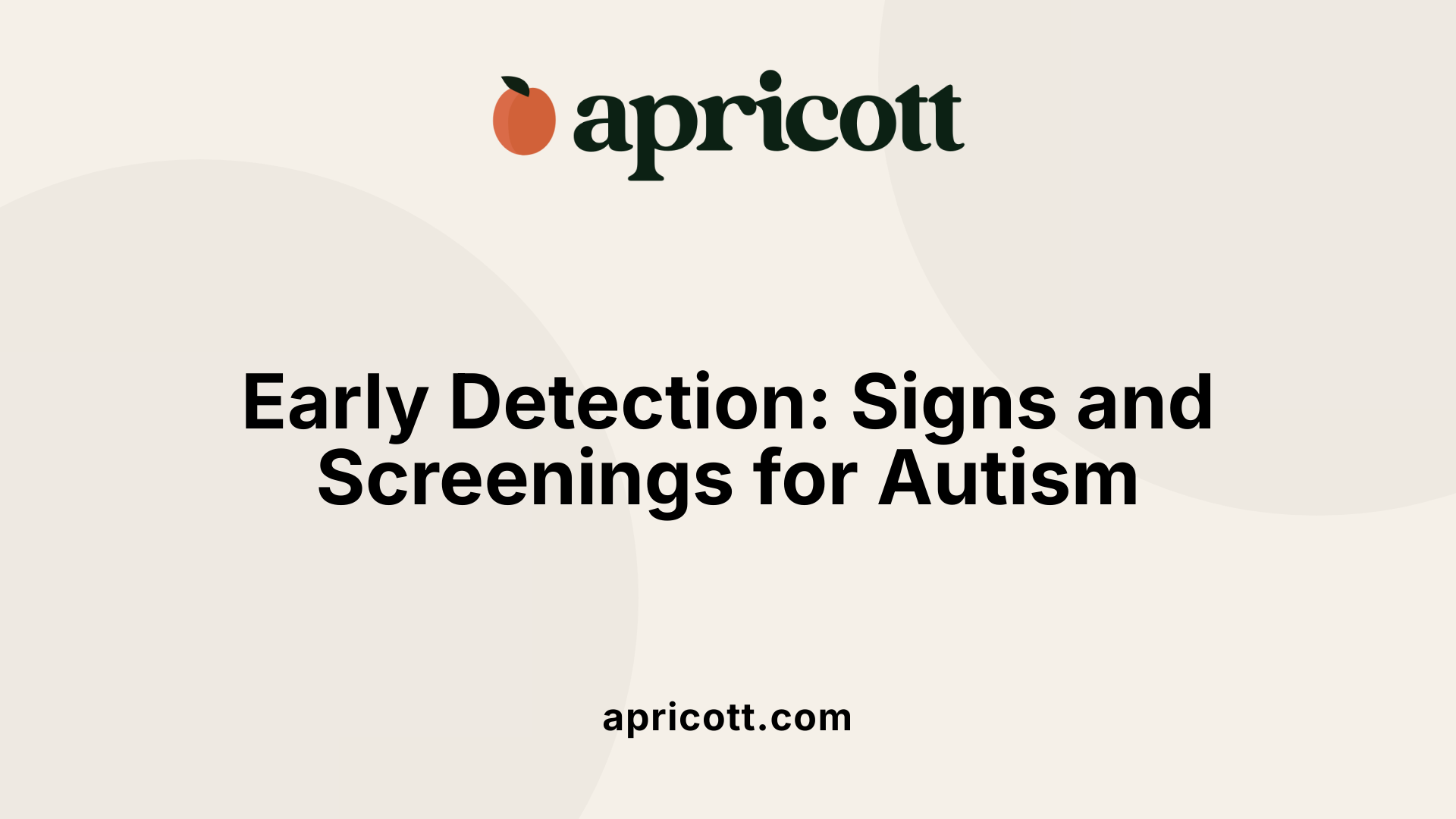
Autism spectrum disorder (ASD) is often identifiable through subtle behavioral signs in infancy. Research suggests that these early signs can appear between six and twelve months of age, typically before a formal diagnosis is made. These signs may include reduced eye contact, delayed babbling, limited response to name, and atypical social engagement.
To facilitate early detection, screening is recommended at 18 and 24 months of age using validated tools such as the Modified Checklist for Autism in Toddlers (M-CHAT). The M-CHAT is a parent-completed questionnaire designed to identify children who may be at risk for ASD and who would benefit from a more comprehensive diagnostic assessment.
The M-CHAT plays a crucial role in early identification by highlighting behaviors associated with ASD. It covers key areas like social interaction, communication, and repetitive behaviors. If a child’s responses on the M-CHAT indicate potential concerns, healthcare providers are prompted to conduct further evaluations or refer the child to specialists.
Although early signs can emerge as early as six months, routine ASD screening at 18 and 24 months helps capture a broader range of developmental trajectories among children. This timeline ensures that children receive timely interventions, which are vital for improving outcomes in communication and social skills.
By incorporating early behavioral observations and standardized screening tools like the M-CHAT, healthcare practitioners can promote early diagnosis and timely support, leading to better developmental progress for children with autism or atypical autism.
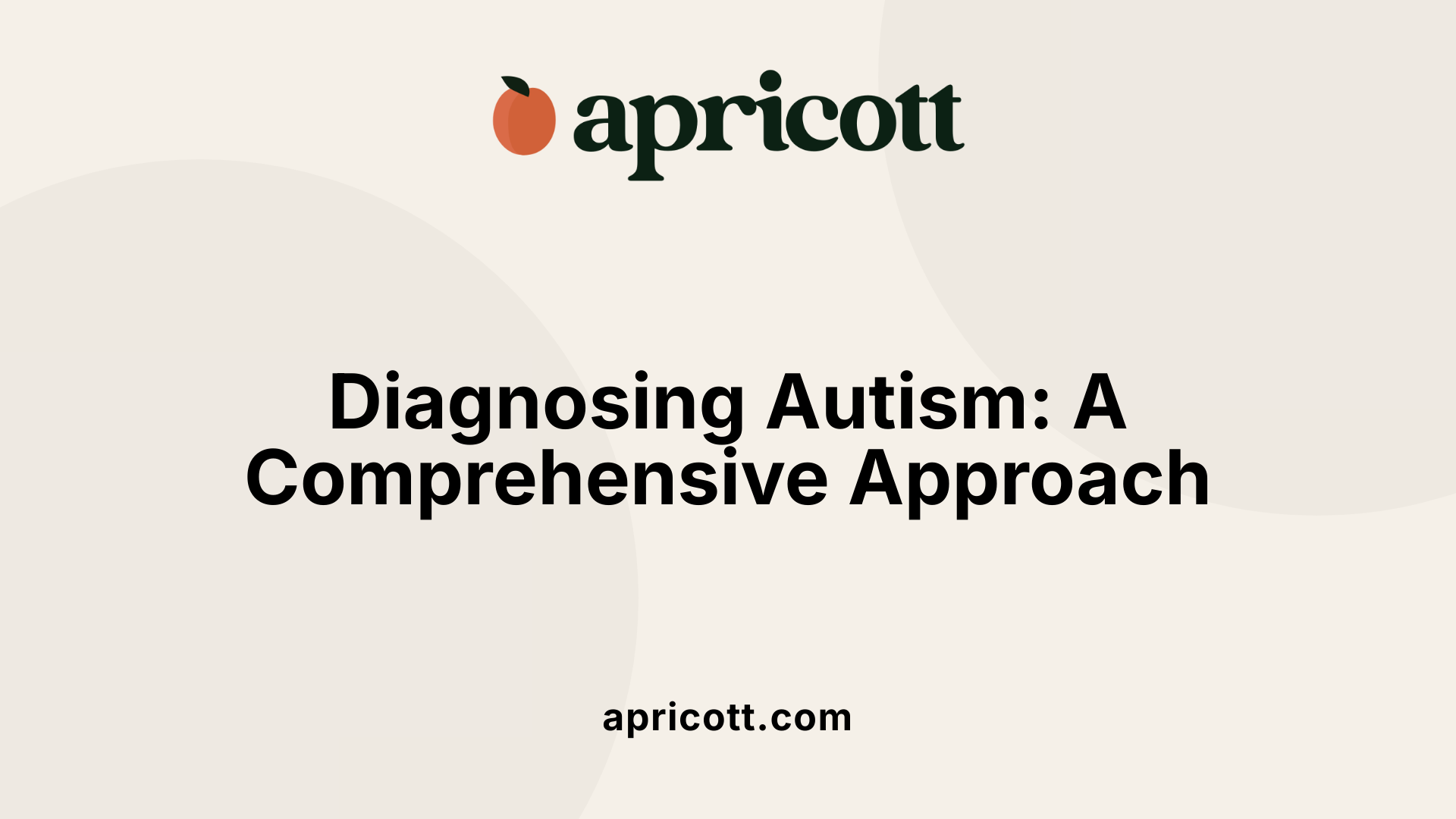
Diagnosing autism spectrum disorder (ASD) is a thorough process that involves a comprehensive evaluation by a specialized interdisciplinary team. This team typically includes professionals such as psychologists, speech therapists, and pediatricians, each bringing expertise crucial for a complete assessment.
The evaluation focuses on three main areas:
To ensure accuracy, clinicians utilize standardized diagnostic tools, with the Autism Diagnostic Observation Schedule (ADOS) being one of the most widely used instruments. ADOS offers a structured and reliable method to observe behaviors associated with autism and aids in distinguishing ASD from other developmental disorders.
This comprehensive approach allows for an in-depth understanding of the individual’s strengths and challenges, supporting an accurate diagnosis that guides interventions and support strategies tailored to each child’s unique profile.

Yes, the abilities and needs of individuals on the autism spectrum vary widely and can change over time. Autism spectrum disorders (ASD) encompass a broad range of conditions characterized by challenges in social interaction, communication, and behavior. Because ASD is diverse, each person's experience and capabilities differ significantly.
Some autistic individuals develop skills that allow them to live independently, pursue education, and maintain employment. Others may experience more significant challenges, requiring ongoing assistance with daily activities, communication, or behavior management. The level of support needed can range from occasional guidance to full-time care.
While many autistic people can achieve degrees of independence, some will need lifelong support due to co-occurring conditions such as epilepsy, intellectual disabilities, or mental health concerns like anxiety and depression. Recognizing this spectrum helps in creating personalized care plans that reflect each individual's strengths and challenges.
Support requirements also evolve over the lifespan. Early intensive behavioral interventions and therapies can improve communication and adaptive skills during childhood. As individuals age, their needs may change, necessitating adjustments in services and support to maintain well-being and quality of life.
Understanding this diversity underscores the importance of tailored interventions and sustained support tailored to each person's unique profile and life stage.
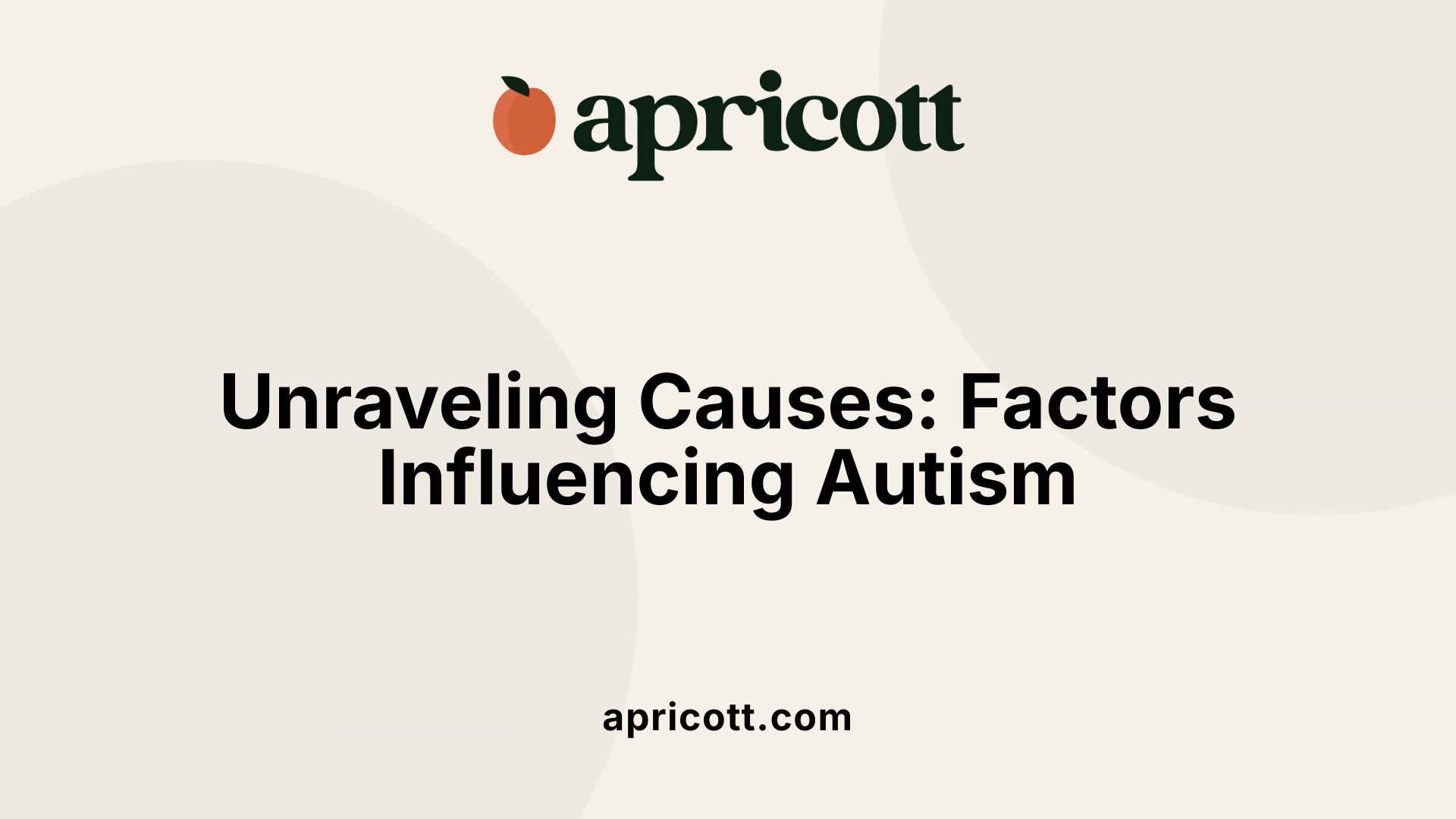
Autism spectrum disorder (ASD) is thought to arise from a complex interplay of genetic and environmental influences. Genetic factors contribute significantly to autism's development, although the exact genes involved vary widely among individuals.
Environmental factors also play a role. These include parental age at conception, with advanced maternal or paternal age linked to an increased risk. Additionally, maternal health during pregnancy affects risk, especially if complications like infections or poor prenatal care occur. Exposure to certain pollutants before birth, prematurity, and birth complications are further contributors that may affect brain development in ways associated with autism.
Genetics are fundamental in ASD, with many studies showing inheritable patterns and gene variations linked to brain development that influence autism risk. However, no single gene causes autism, reflecting the disorder's diversity and complexity.
Older parental age is associated with a higher likelihood of having a child with ASD. Research suggests that biological changes in eggs and sperm as parents age could contribute to this increased risk. Moreover, prenatal exposure to environmental pollutants—such as air pollution—and certain pregnancy-related issues, like maternal infections or complications during birth, may increase the probability of autism.
A common misconception is that vaccines cause autism. Extensive scientific research has thoroughly debunked this myth. Vaccines, including the MMR (measles, mumps, and rubella) vaccine, and components like thiomersal and aluminum, have been shown to be safe and do not cause autism. This conclusion is supported by numerous large-scale studies and continues to be upheld by global health organizations.
By understanding these causes and dispelling myths, awareness can be improved, helping families and healthcare providers focus on effective early interventions and support systems.
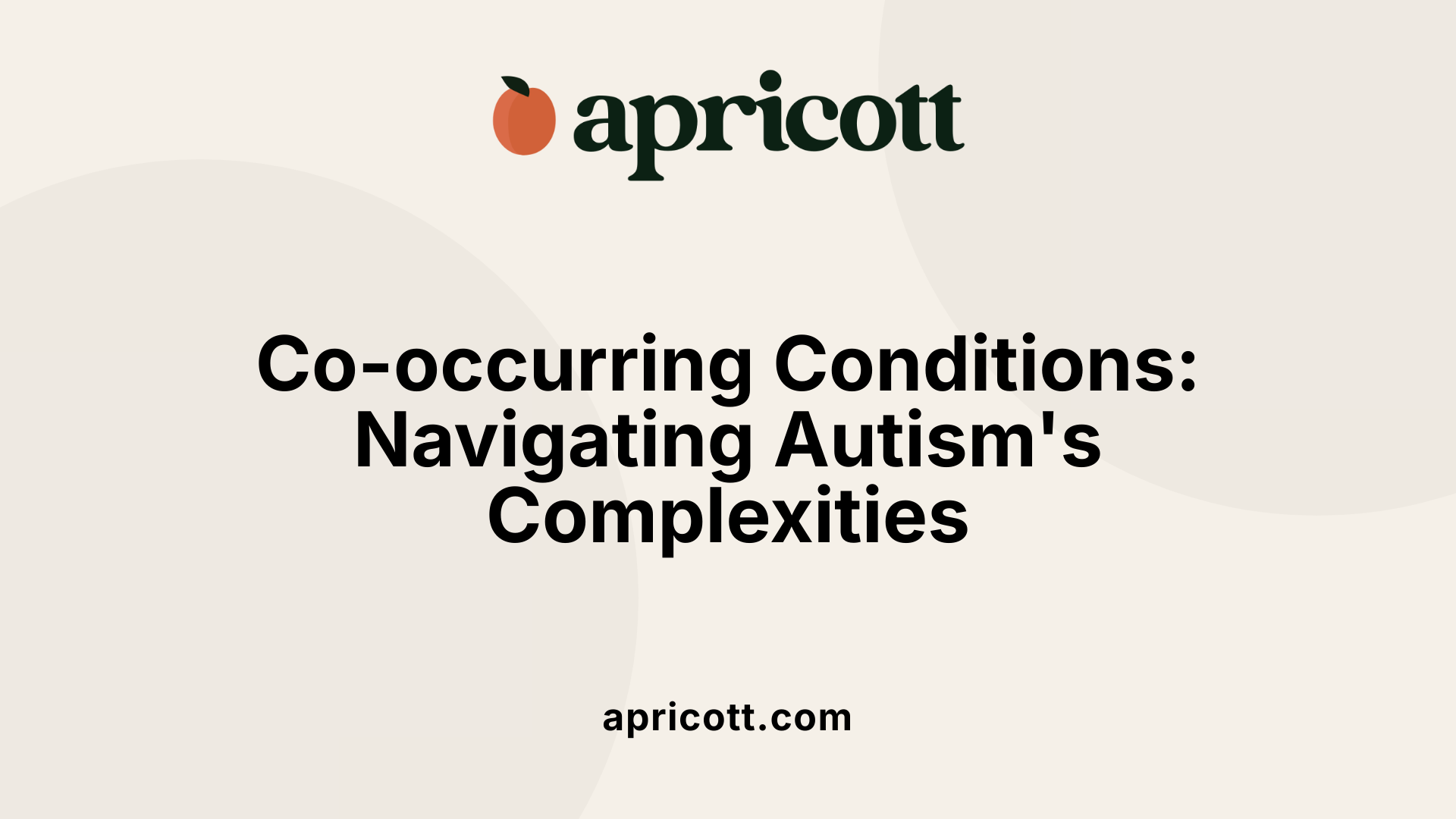
Autism spectrum disorders frequently co-occur with several other conditions, including epilepsy, depression, anxiety, and attention-deficit/hyperactivity disorder (ADHD). These co-occurring conditions add complexity to the clinical presentation of autism and often require a comprehensive approach to diagnosis and intervention.
Epilepsy is a neurological condition seen more frequently in individuals with autism compared to the general population. Mental health challenges such as depression and anxiety are also common, especially as autistic individuals grow older. ADHD, characterized by patterns of inattention and hyperactivity, is another frequent comorbidity.
The presence of these additional conditions can influence both how autism is diagnosed and the strategies used for treatment. For example, anxiety may exacerbate social communication difficulties, requiring tailored therapeutic approaches. Effectively addressing co-occurring disorders alongside autism can improve overall outcomes and quality of life for autistic individuals.
Considering these factors, a multidisciplinary team often conducts assessments and plans to ensure integrated care. Understanding and managing co-occurring conditions are essential steps to providing comprehensive support for autistic people and their families.
Applied Behavior Analysis (ABA) is a science-based approach used extensively in behavioral therapy for autism spectrum disorder (ASD). Its core principles focus on understanding why behaviors happen and using that information to encourage beneficial behaviors while discouraging those that may be harmful or interfere with learning.
ABA therapy examines behavior in detail, identifying triggers and consequences in the environment that affect an individual's actions. Through systematic observation and measurement, it targets specific behaviors to increase positive skills like communication, social interaction, and self-care.
The goal of ABA-based behavioral therapies is to teach new skills by reinforcing desirable behaviors consistently. This approach encourages generalization, which means transferring these skills to different settings and situations, while decreasing undesirable behaviors. For children with ASD, especially preschool- to early school-aged, intensive intervention involving at least 25 hours per week has been recommended.
The primary focus of therapy involving behavioral analysis, such as ABA, is to understand how behavior works and how it is influenced by the environment. ABA aims to increase beneficial behaviors like communication, social and daily living skills while reducing problematic behaviors through evidence-based techniques like positive reinforcement and individualized treatment plans.
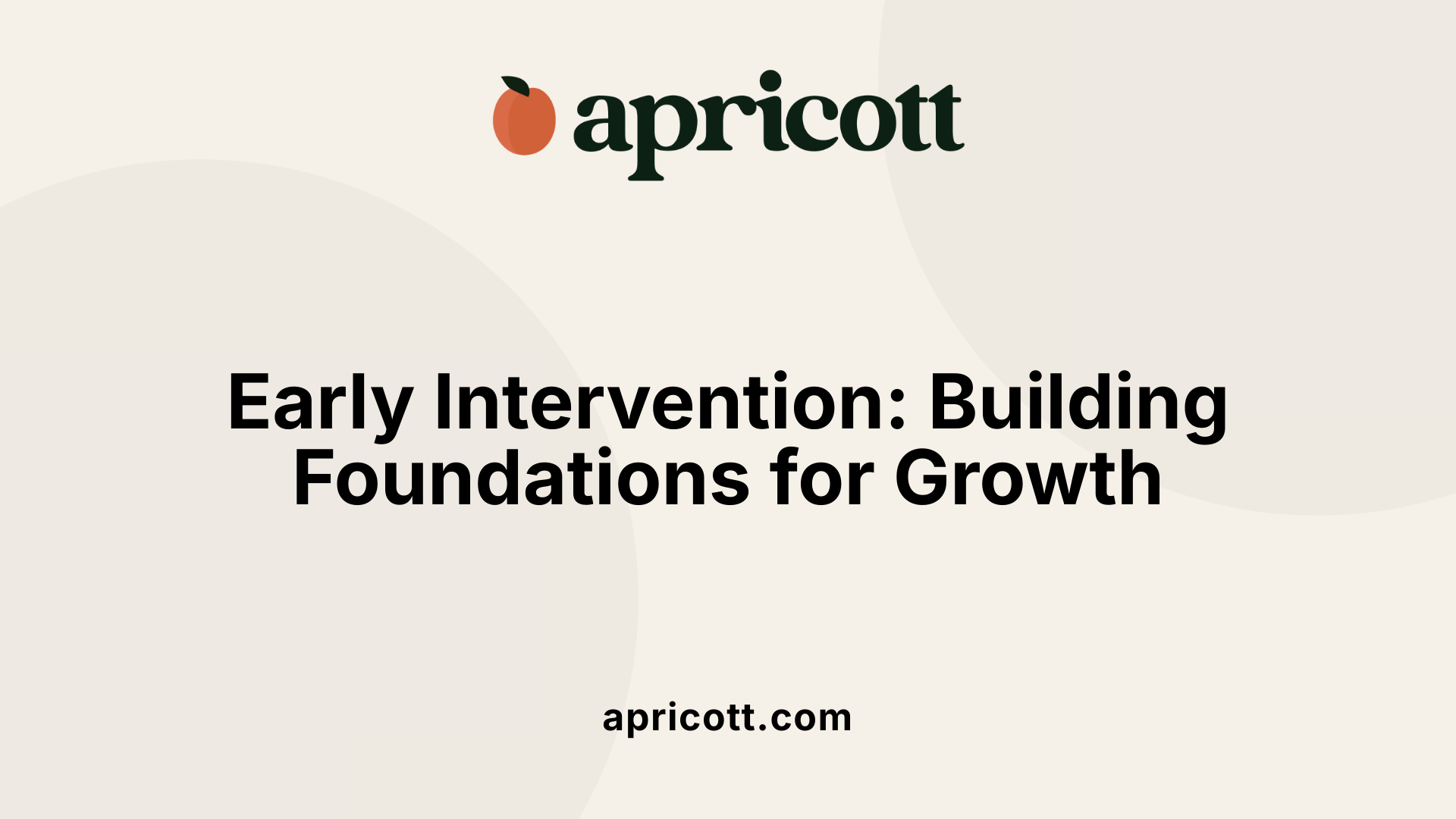
Early intensive behavioral intervention is strongly recommended for preschool- to early school-aged children with autism spectrum disorder (ASD). This approach is primarily based on applied behavior analysis (ABA), which focuses on teaching new skills through reinforcing desirable behaviors, encouraging these behaviors to generalize, and decreasing undesirable behaviors.
To maximize effectiveness, early behavioral intervention should involve at least 25 hours of therapy each week. It is most beneficial when started early in a child's development, specifically in the preschool to early school years. Early starts capitalize on neuroplasticity, allowing children to make significant gains during critical developmental stages.
Research supports that ABA-based early intensive behavioral intervention delivered over an extended period results in notable improvements. These improvements include enhanced cognitive abilities, better language skills, and increased adaptive behaviors, all of which contribute to improving the child's overall functioning and quality of life.
The therapy's intensity—defined by the number of weekly hours—is critical for success. Ensuring a comprehensive, consistent, and structured intervention program over time allows children to build and solidify positive behavioral patterns and communication skills. This structured intensity helps to tailor interventions to individual needs and encourages meaningful progress.
In summary, early intensive behavioral intervention for children with ASD entails a substantial commitment to therapy hours starting from the preschool years, using ABA techniques. Extended and focused application of this approach has been proven to yield significant developmental benefits.
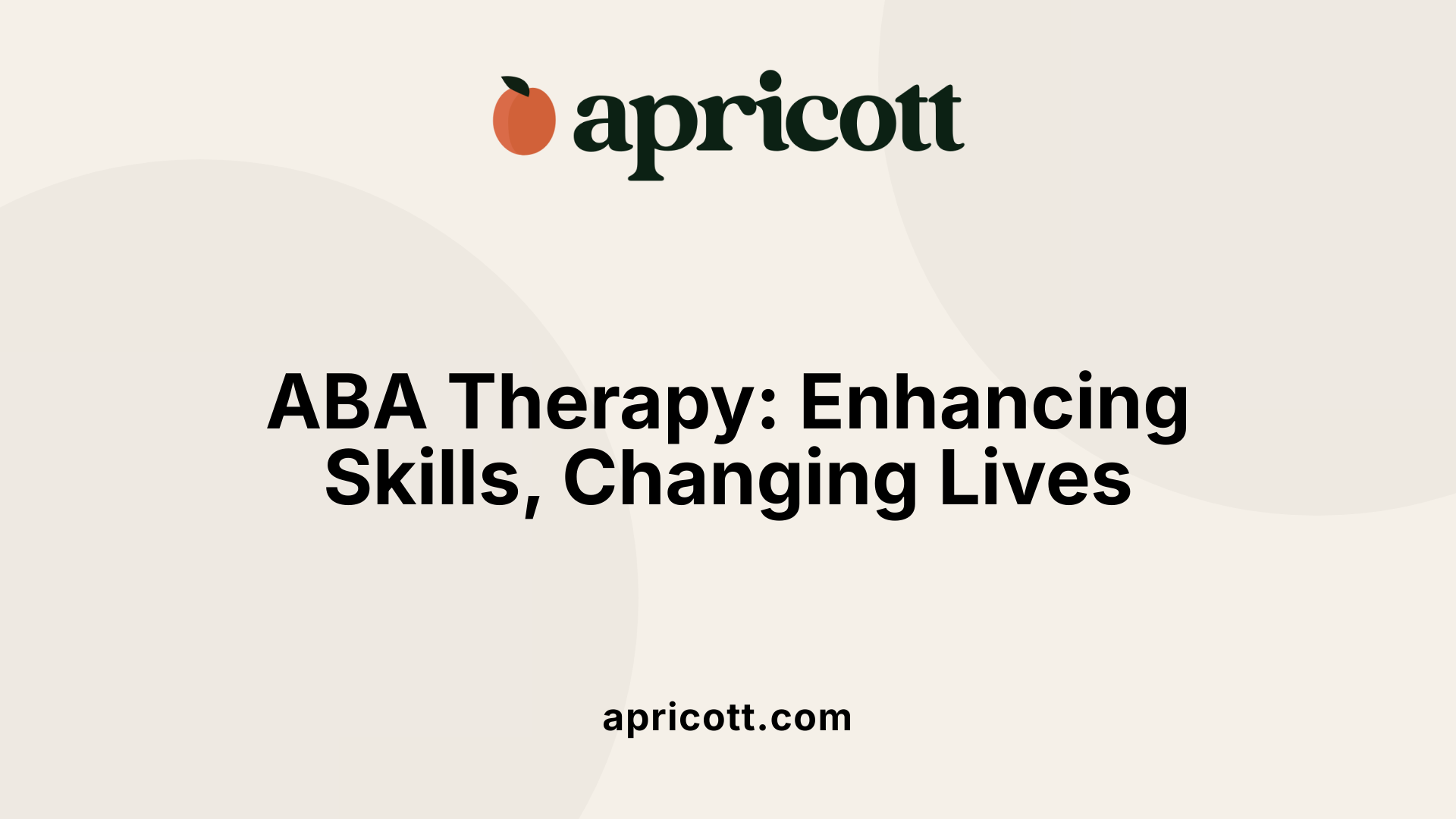
Applied Behavior Analysis (ABA) is a widely endorsed approach for early intervention in children with Autism Spectrum Disorder (ASD), especially in preschool to early school-age groups. This therapy usually involves intensive sessions, typically at least 25 hours per week, and focuses on reinforcing positive behaviors while reducing undesirable ones.
Research supports that sustained ABA therapy leads to significant gains in several developmental areas. Children undergoing early intensive behavioral intervention tend to show notable improvements in cognitive abilities, including thinking and problem-solving skills. Moreover, language development often advances, with children better able to communicate and express their needs.
Adaptative behaviors, which encompass vital daily life skills such as self-care, social interaction, and functional independence, also improve with consistent ABA treatment. These enhancements promote greater autonomy and quality of life for autistic children, enabling smoother integration in educational and community settings.
The benefits of ABA-based intervention are not just short-term; evidence shows long-lasting positive effects on these domains when the therapy is delivered over extended periods during critical developmental windows. This underscores the importance of early and consistent engagement in ABA programs to maximize outcomes for children with ASD.
Cognitive behavioral therapy (CBT) has shown effectiveness in reducing anxiety among older children with autism spectrum disorder (ASD), particularly those who have an average or above-average IQ. This therapeutic approach helps these children understand and manage their anxious thoughts and behaviors by developing coping strategies and problem-solving skills.
CBT's strength lies in its structured, goal-oriented framework that allows children with ASD to learn ways to regulate emotions and decrease the frequency and intensity of anxiety symptoms. This is especially important as anxiety is a common comorbid condition in autism, potentially impacting daily functioning and quality of life.
CBT is tailored to children who possess sufficient cognitive abilities to engage with the therapy's techniques, which often rely on verbal communication and abstract thinking. Older children with ASD who meet these cognitive criteria tend to benefit most from CBT, as they can participate actively in therapy sessions and apply learned strategies independently.
While CBT effectively addresses anxiety, it is often integrated with other evidence-based psychosocial interventions to provide comprehensive support for children with autism. Combining CBT with interventions that focus on social skills, communication, and adaptive behaviors can optimize overall outcomes and enhance well-being and quality of life for autistic children and their families.
Psychosocial interventions play a significant role in supporting autistic individuals beyond traditional behavioral therapies. These interventions focus on improving communication and social skills, which are often challenging areas for those with autism spectrum disorders (ASD).
By enhancing communication abilities, autistic individuals are able to better express their needs and connect with others, fostering more meaningful social interactions. This improvement not only increases their independence but also enriches their day-to-day experiences.
In addition to boosting personal skills, psychosocial support positively affects the overall quality of life. It helps autistic people navigate social settings more effectively and reduces feelings of isolation.
Support for caregivers is another critical aspect of these interventions. Caregivers often face stress and challenges that can be alleviated with proper psychosocial resources, which provide strategies and emotional support to manage care responsibilities better.
Together, these benefits contribute to stronger social integration for autistic individuals and happier, healthier family dynamics.
Autism spectrum disorders (ASD) affect an estimated 1 in 127 people globally as of 2021. This prevalence rate reflects the broad diversity of individuals impacted by ASD across different regions and cultures. It is important to understand that autism is a complex neurodevelopmental condition characterized by challenges in social interaction, communication, and behavior patterns.
In recent years, awareness of ASD has increased substantially, partly due to enhanced education about the condition and the adoption of validated screening tools like the Modified Checklist for Autism in Toddlers (M-CHAT). These tools enable earlier identification of symptoms, typically observed between 6 and 12 months of age, although formal screening is recommended at 18 and 24 months.
The rising diagnosis rates reflect improvements in screening protocols and broader recognition among healthcare professionals and the public rather than an actual increase in prevalence. This improved detection supports early intervention efforts, which are critical for helping autistic individuals develop communication, social, and adaptive skills.
Overall, greater global awareness and diagnostic capacity facilitate timely support and services, enhancing the quality of life for autistic people and their families worldwide.
Early intervention with psychosocial services for autistic children is a crucial strategy that supports development during the formative years. These services use methods like applied behavior analysis (ABA), which helps teach new skills by reinforcing positive behaviors and reducing undesirable ones. Providing at least 25 hours of therapy per week, particularly to preschool- and early school-aged children, creates a supportive environment that fosters learning and growth.
Evidence strongly indicates that ABA-based early intensive behavioral intervention leads to notable improvements in cognitive abilities, language, and adaptive skills. These developmental gains can significantly enhance a child’s capacity to function independently over time. Furthermore, as some autistic children have associated conditions such as anxiety or ADHD, early support can also help manage these co-occurring challenges.
Targeted psychosocial interventions enhance communication and social skills, which are typically areas of difficulty for autistic individuals. Improved social abilities can positively impact daily interactions and quality of life. This helps not only the autistic individual but also benefits their caregivers by reducing stress and fostering better relationships.
Overall, early intervention with evidence-based psychosocial services creates a foundation for better long-term outcomes by supporting developmental progress and social engagement. It plays an essential role in maximizing potential and improving the well-being of autistic children and their families.
| Aspect | Description | Benefits |
|---|---|---|
| Early Psychosocial Services | Intensive ABA therapy, starting in preschool years | Skill acquisition, behavior improvement |
| Developmental Outcomes | Cognitive, language, and adaptive skill enhancements | Greater independence, academic readiness |
| Social Skills Development | Improving communication and social interaction capabilities | Better relationships, increased social participation |

Behavioral analysis therapies, such as Applied Behavior Analysis (ABA), are delivered by qualified professionals including certified behavior analysts and specialized interdisciplinary teams. These teams often consist of psychologists, speech therapists, occupational therapists, and other specialists who collaborate to provide comprehensive care.
Each therapy plan is tailored to the unique abilities and needs of the individual child. Individualized treatment plans ensure that interventions target specific behavioral goals, such as improving communication, social skills, or reducing challenging behaviors. These plans are designed to be flexible and adaptive, evolving as the child's development progresses.
ABA therapies use rigorous data collection and scientific methods to track progress and inform decision-making. By continuously monitoring behaviors, therapists can reinforce desirable actions, encourage generalization of skills, and reduce unwanted behaviors. This evidence-based approach maximizes the effectiveness of therapies and supports meaningful improvements.
Qualified professionals work cooperatively within team settings to coordinate intervention strategies. Behavior analysts play a central role in designing and overseeing therapy, while other specialists contribute expertise to address areas such as speech, motor skills, and emotional regulation. This collaborative model ensures holistic support for the child's development and fosters independence and social inclusion.
Atypical autism reminds us that the autism spectrum is broad and varied, encompassing diverse presentations that require nuanced recognition and intervention. Harnessing the power of behavioral analysis therapies such as ABA and integrating psychosocial supports enable significant gains in development, communication, and quality of life. Early, evidence-based, and individualized approaches are critical to meeting unique needs within the spectrum, ensuring that all individuals with autism, including those with atypical forms, have the opportunity to thrive and engage meaningfully with their world.